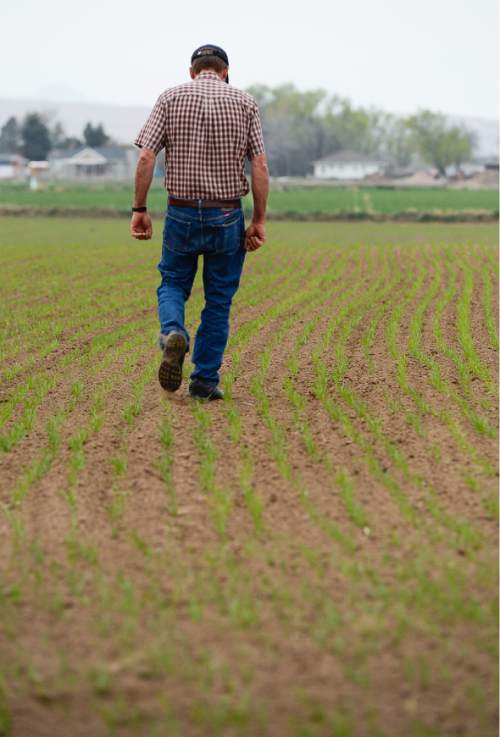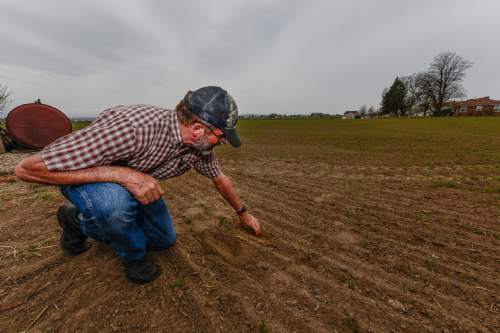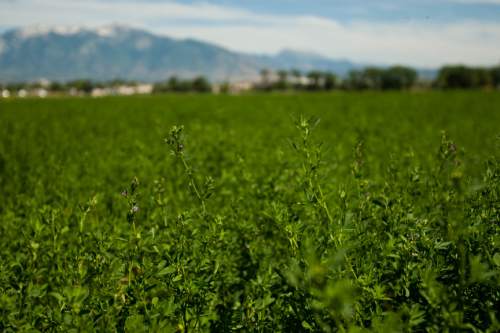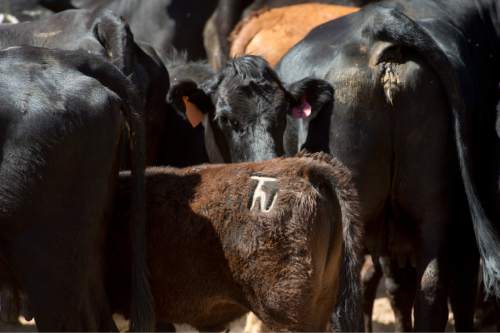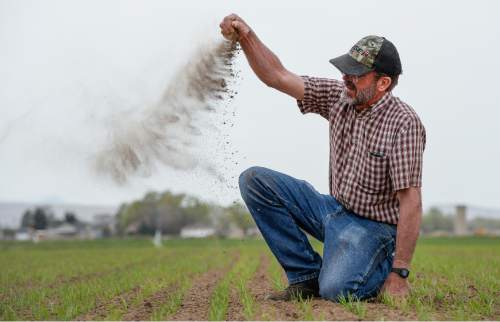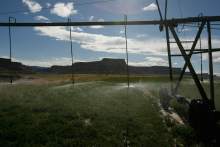This is an archived article that was published on sltrib.com in 2015, and information in the article may be outdated. It is provided only for personal research purposes and may not be reprinted.
Neal Briggs hasn't seen a drier spring.
The Syracuse alfalfa and wheat farmer has cause for his concern. As water shortages around the state grow with each warm spring day, many Utah farmers soon will have to decide whether to plant traditional, water-guzzling crops.
A lack of water has plagued most of Tooele County for months, while severe drought conditions grew across northern and central Utah as March ended, according to a U.S. Drought Monitor report released last week.
"I'd say it's becoming critical at this point," said Briggs, president of the Davis County Farm Bureau. "If this drought persists, we could see the worst year yet."
Last week, the federal government declared that farmers and ranchers in eight Utah counties — Salt Lake, Tooele, Davis, Weber, Morgan, Box Elder, Cache and Rich — had suffered enough losses from the drought to ask for emergency loans. Normally, such drought declarations don't happen until the end of the year, said Leland Hogan, president of the Utah Farm Bureau.
Farmers have eight months from the date of the U.S. Department of Agriculture's announcement to apply for loans.
"It's going to be a tough season," said Hogan, who has alfalfa and cows in Stockton. "People are going to be on rationed water from the very beginning. Normally, that doesn't take place until early- to mid-July."
All of Utah's low-elevation snowpack has melted, and what little remains will melt quickly, according to a state water supply report.
Salt Lake City experienced its least snowy winter since record-keeping started in 1885 — and its warmest winter since that documentation started in 1874.
On top of that, water basins statewide are either at the worst they've been in 30 years, or close to it.
April 1 is the normal peak of snowpack accumulation, a major provider of water in Utah. But this year, the report said, the majority of the state's watersheds were under 50 percent of normal. Tooele was just 18 percent of normal.
Mountain snows won't help much. Spring runoff, which helps fill Utah's reservoirs and recharge aquifers, is already underway.
Meanwhile, March's precipitation was 47 percent of normal across the state. For the water year, which started in October, water from rain and snowfall is just 62 percent of average.
And reservoir storage is close to last year's levels at this time — 65 percent of normal.
Water managers "should prepare for early, short duration stream flow, a longer irrigation season, and low stream flow," the report said.
Water officials are comparing the upcoming summer of 2015 with other dreadful drought years, including 1934, 1977 and 2002.
"Suffice it to say," the water report reads, "2015 is a dead skunk."
Seasonal water supply forecasts fall below 25 percent of average for parts of the Weber, Provo, Six Creeks, Sevier, and Virgin River basins, according to a Colorado Basin River Forecast Center released last week.
Ernest Matthews, a lifelong Grantsville farmer, hasn't seen his area's water levels this bad in a long time.
"I think we're going to have to cut everybody down quite a bit from what we usually [do]," said Matthews, president of Tooele County's farm bureau. "There is nothing. It is dusty [out there]."
The Weber Basin Water Conservancy District already is forbidding people from watering between 10 a.m. and 6 p.m. The district's irrigation season starts April 20.
"Our hearts go out to those Utah farmers and ranchers affected by recent natural disasters," said U.S. Agriculture Secretary Tom Vilsack in a statement. "President Obama and I are committed to ensuring that agriculture remains a bright spot in our nation's economy by sustaining the successes of America's farmers, ranchers, and rural communities through these difficult times."
There's at least a chance of more valley rain and mountain snow across much of northern Utah throughout the week. And central and southern Utah also could see some precipitation around mid-week.
Tribune reporter Brett Prettyman contributed to this story.
Twitter: @mikeypanda



